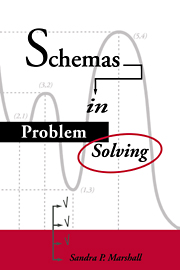1 - Schema roots
Published online by Cambridge University Press: 22 October 2009
Summary
In current cognitive science and psychology, one encounters little consensus about what constitutes a schema. The term has been loosely used for some time, and it lacks a common and well-specified definition to which we all can turn. Even dictionaries are not of much assistance, because, for the most part, they give only vague synonyms such as shape or form for the word schema. My intention in this chapter is to clarify our understanding of the concept by identifying the important and lasting attributes that have been attached to the term over the history of its use, first in philosophy and then in psychology. These attributes will be incorporated into an expanded definition of the schema in chapter 2, resulting in a formulation having sufficient detail to allow the development of explicit cognitive models.
The term schema has a long and rich background. Both the word and the concept it reflects are prominent in the writings of the ancient Greek philosophers. It permeates the philosophy of Immanuel Kant. It guided the research of many early psychologists. And now it has a place in cognitive science. As one might expect, schema has not carried exactly the same connotations over this long period of usage, although there are important continuities. Even more important for the study of modern schema theory are the differences and the unresolved issues that vexed our predecessors. A look at a few instances of its previous application sheds light on our modern understanding and use of the term.
- Type
- Chapter
- Information
- Schemas in Problem Solving , pp. 3 - 36Publisher: Cambridge University PressPrint publication year: 1995
- 1
- Cited by

